Research
Exoplanets and Brown Dwarfs
Current Research at OSU
Is there life elsewhere in the universe? What will this life look like? Are we alone? These are some big questions in astronomy. I work with Dr. Ji Wang at OSU to work towards getting closer to these answers. We are studying whether or not certain types of biosignatures will be detectable in super-Earth (exoplanets that are 2-10 times as massive as Earth) atmospheres with upcoming telescopes such as the James Webb Space Telescope. Check back in for an update on our progress.
Master's Thesis at UT Austin
Brown dwarfs straddle the mass region between gas giant planets and low-mass stars and have similar masses and atmospheric properties as gas giants. They are observationally easier to characterize, thus we can understand more about properties of gas giants by studying them. However, brown dwarf companions are rare (<5% occurence rate). Upcoming developments of larger telescopes such as the James Webb Space Telescope and the Giant Magellan Telescope will be able to probe even closer separations and discover lower mass planets to characterize their fundamental properties.
At the University of Texas at Austin I worked with Professor Brendan Bowler on a project characterizing a companion at the substellar boundary in the Beta Pictoris Moving Group. We found that this object has a peculiar nature when compared to other similar substellar companions in the Beta Pictoris Moving Group. Although the history states that the object belongs to the Beta Pictoris Moving Group, membership tools show low probability, which makes 2M0443+3723 B a kinematic outlier. If this unusually bright substellar boundary object does belong to the Beta Pictoris Moving Group, its mass is too high to be a brown dwarf, but we found that if it is an unresolved binary that mass is ~52 Jupiter masses.
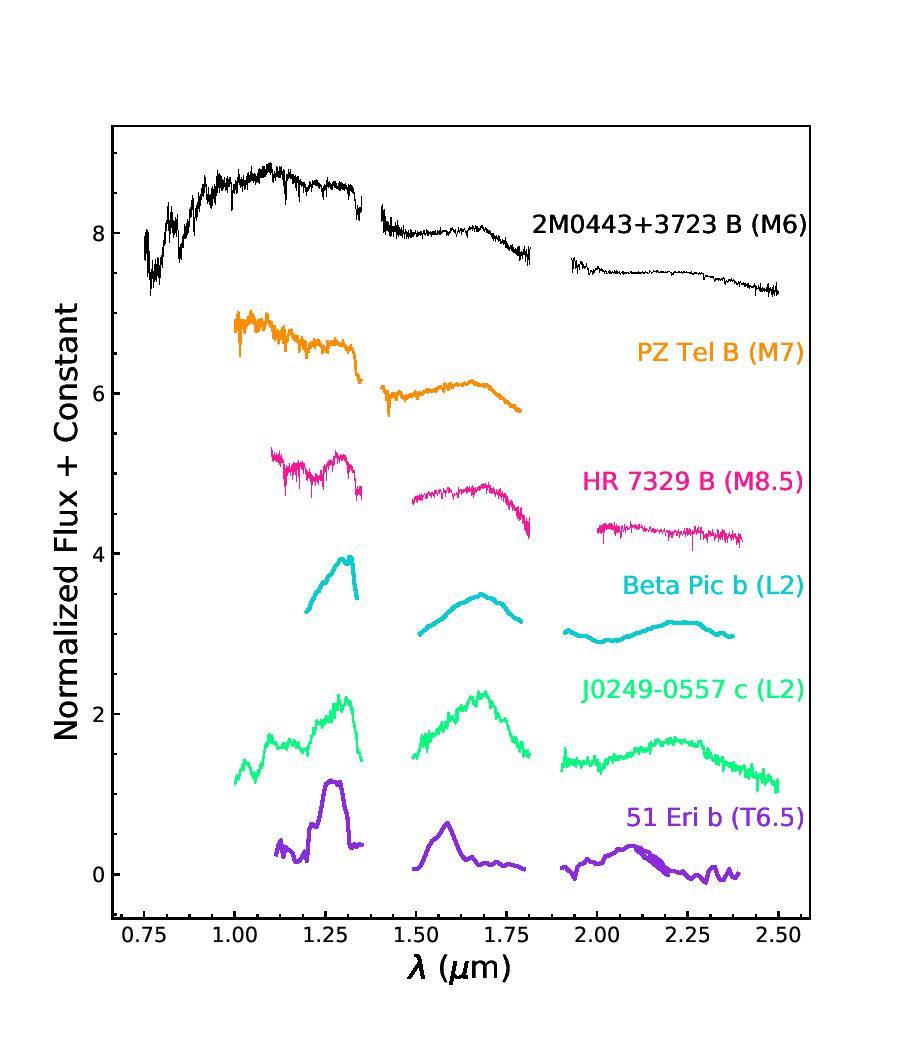 Spectral sequence of known substellar companions in the βPMG along with the candidate benchmark brown dwarf, 2M0443+3723 B. PZ Tel B and HR 7329 B have masses above the deuterium-burning limit (∼13 Jupiter Masses).
Spectral sequence of known substellar companions in the βPMG along with the candidate benchmark brown dwarf, 2M0443+3723 B. PZ Tel B and HR 7329 B have masses above the deuterium-burning limit (∼13 Jupiter Masses). 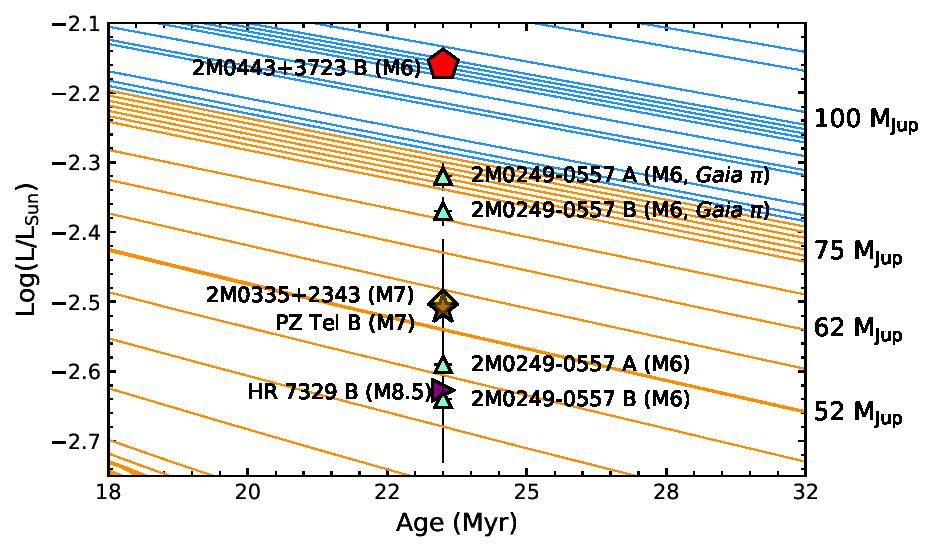 Brown dwarf companions PZ Tel B (brown star) and HR 7329 B (purple triangle) are clearly within the brown dwarf regime, while 2M0443+3723 B lies near the hydrogen- burning limit, which is surprising if it is a single member of this group because it has a similar spectral type as 2M0249- 0557 AB and PZ Tel B.
Brown dwarf companions PZ Tel B (brown star) and HR 7329 B (purple triangle) are clearly within the brown dwarf regime, while 2M0443+3723 B lies near the hydrogen- burning limit, which is surprising if it is a single member of this group because it has a similar spectral type as 2M0249- 0557 AB and PZ Tel B. 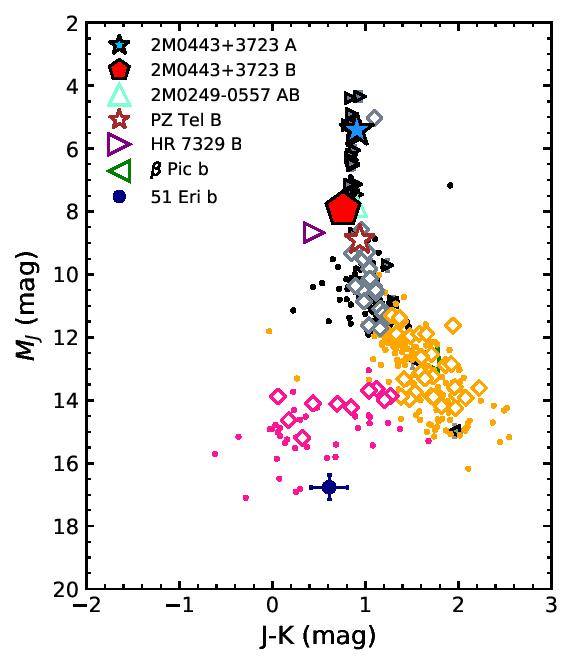 M_J vs (J-K) color magnitude diagrams of brown dwarfs and gas giants (M–T spectral types) from the βPMG and other field ultracool dwarfs compared to 2M0443+3723 B (red pentagon). 2M0443+3723 B is brighter than other single brown dwarf companion, PZ Tel B (M7 ± 1).
M_J vs (J-K) color magnitude diagrams of brown dwarfs and gas giants (M–T spectral types) from the βPMG and other field ultracool dwarfs compared to 2M0443+3723 B (red pentagon). 2M0443+3723 B is brighter than other single brown dwarf companion, PZ Tel B (M7 ± 1). Undergraduate Research at the University of Arkansas at Little Rock
As an undergraduate, I worked with Professor Tony Hall on a research project involving the classification and identification of known meteorite samples. Meteorties provide insight into the initial conditions and elements present during the formation of the Solar System. The motivation for this project was to understand basic spectroscopic properties of stony meteorites to assist the small Physics & Astronomy department with determining the nature of unknown samples from the public. This project focused on stony meteorites; they are the most common type of meteorite, but not the most common found. This is due to weathering which can alter their appearance, which makes them resemble Earth rocks.
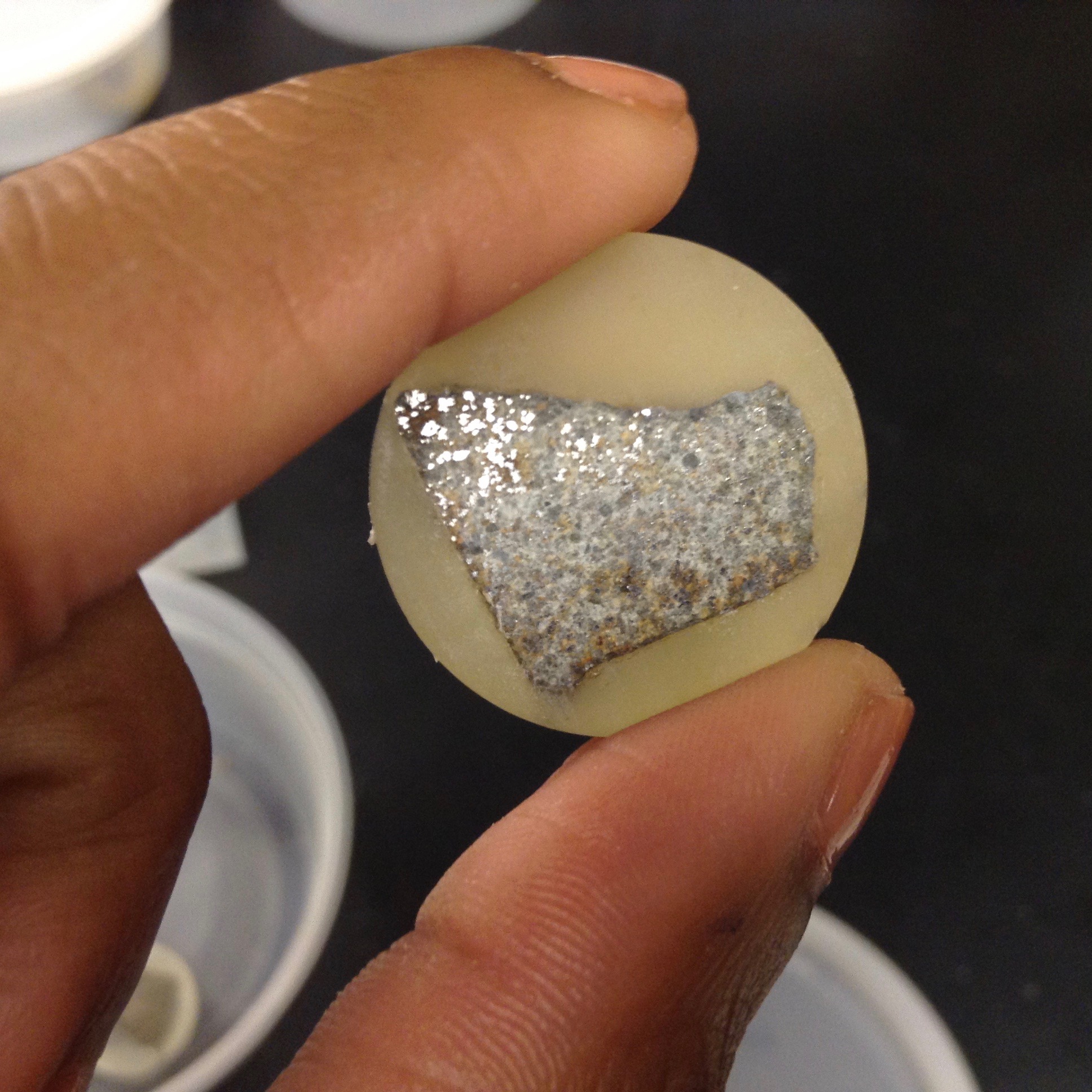 Cut section of El Hammami meteorite from diamond saw blade. The sample is mounted in a proxy solution for use under the Raman Spectrometer
Cut section of El Hammami meteorite from diamond saw blade. The sample is mounted in a proxy solution for use under the Raman Spectrometer 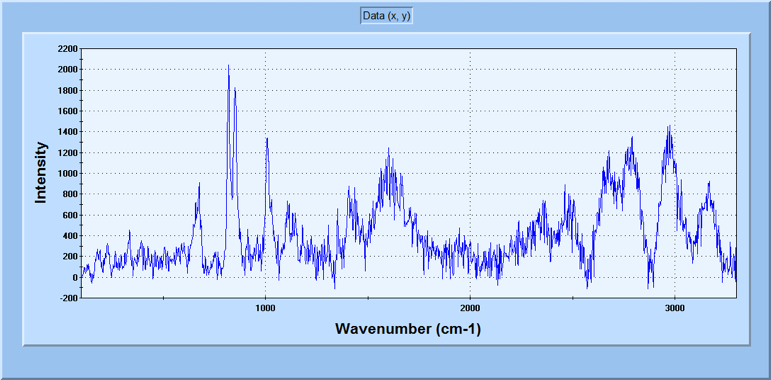 Raman spectra of El Hammami meteorite matrix shows presence of mineral Olivine, along with Enstatite, and other minerals known to stony meteorites.
Raman spectra of El Hammami meteorite matrix shows presence of mineral Olivine, along with Enstatite, and other minerals known to stony meteorites. 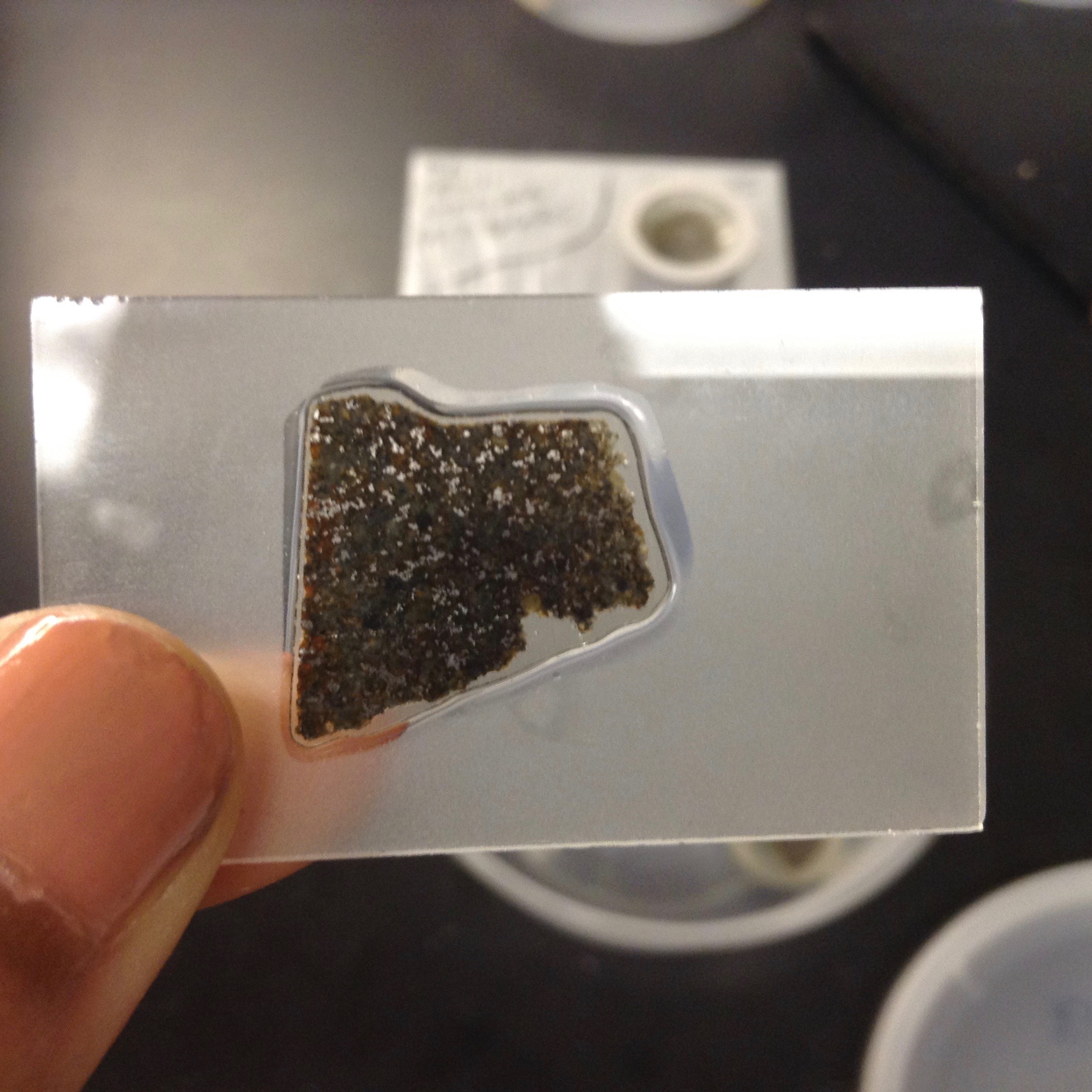 Thin section made of El Hammami meteorite for petrographic microscope
Thin section made of El Hammami meteorite for petrographic microscope